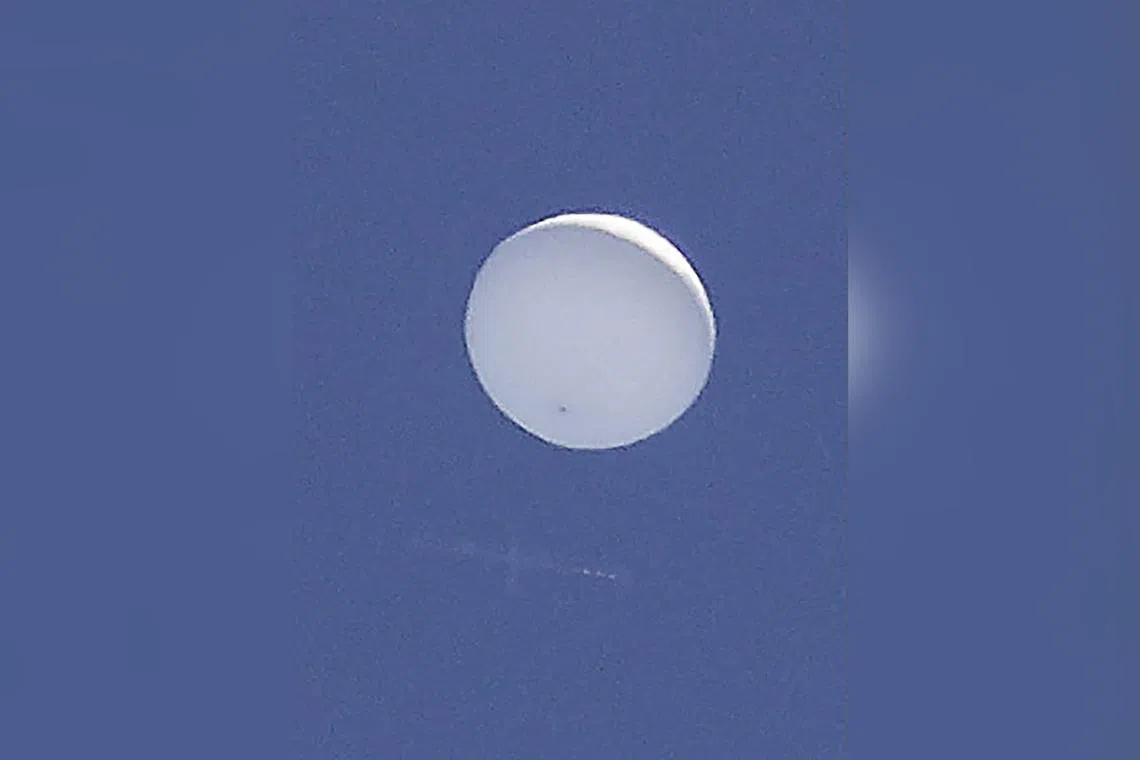Japan to pave way for military to shoot down intruding balloons
Sign up now: Get insights on Asia's fast-moving developments

An unidentified flying object is seen over Sendai in Miyagi prefecture on June 17, 2020
PHOTO: AFP
Follow topic:
TOKYO – Japan has mooted allowing its military to shoot down encroaching balloons and unmanned unidentified flying objects (UFOs), with a former defence minister warning on Wednesday of a “gaping hole” in the country’s security.
This came as Tokyo said for the first time that it “strongly suspects” China of having flown three spy balloons into its airspace since 2019.
Allowing the Self-Defence Forces (SDF) to shoot down such aerial objects – regardless of origin – will be a marked shift from Japan’s pacifist stance that bars any use of weapons except when danger is clearly imminent.
Defence Minister Yasukazu Hamada on Tuesday suggested that the SDF be allowed to use air-to-air missiles to shoot down balloons that violate Japan’s airspace, citing the potential danger to air traffic.
His remarks have moved the needle on Japan’s broader debate on how far – and how soon – it is willing to depart from its pacifism. Yet, there are caveats to the change in rules, which must be discussed in the Diet, or Parliament.
For one thing, security watchers like Dr Satoru Nagao – a non-resident fellow at the Hudson Institute, a US think-tank – have described Japan’s capability to respond as “borderline”.
On Feb 4, the United States deployed an F-22 fighter jet – which has the highest altitude ceiling in its fleet – to shoot down what it said was a Chinese spy balloon
But balloons fly higher than the common operating altitude of the F-15s and F-35s in Japan’s fleet, which means there are limitations to what Japan can cope with, Dr Nagao told The Straits Times, noting the special training and equipment that pilots will require.
Still, former defence minister Itsunori Onodera said on Wednesday that it was a “major problem” that Japan had not been able to identify the balloons as Chinese ones until now.
“It’s even more of a problem if we knew about it but did not protest,” added Mr Onodera, who now chairs the ruling Liberal Democratic Party’s research commission on security. “It makes me worry that there is a gaping hole in Japan’s defences.”
The party began policy talks about shoot-downs on Wednesday, noting that the US – Japan’s security ally – has shot down four balloons over North America
While the Pentagon has said that the first of the four balloons was a Chinese reconnaissance balloon, it added that the other three, of unknown origin, were “possibly benign”.
Beijing said the balloon had no military purpose and was a weather-monitoring airship that had blown off course. It has also accused the US of flying high-altitude balloons over Chinese airspace more than 10 times since 2022
Taiwan also warned this week that it will shoot down any suspected military objects from mainland China.
Japan’s Chief Cabinet Secretary Hirokazu Matsuno told a regular news briefing on Wednesday: “As a result of further investigations of specific balloon-shaped flying objects that were confirmed in Japan’s airspace before, it is strongly suspected that they were unmanned surveillance balloons from China.”
These remarks prompted an immediate rebuttal from Beijing, with Foreign Ministry spokesman Wang Wenbin saying: “Japan is making groundless accusations and smearing China without conclusive evidence. We are resolutely opposed to that.”
Japan’s Defence Ministry, in a statement late on Tuesday, said it strongly suspects that China was behind balloons sighted over the south-western city of Satsumasendai in Kagoshima prefecture in November 2019, and over the north-eastern cities of Sendai in Miyagi and Hachinohe in Aomori in June 2020 and September 2021, respectively.
There are SDF bases in these three cities. When the balloon sighting in 2020 was reported, then Defence Minister Taro Kono had said it posed no security risks.
Without elaborating how it had come to the conclusion that these objects were from China, the Defence Ministry said on Tuesday: “We will put more effort than ever into information gathering and surveillance activities against balloons, including unmanned ones for foreign espionage.”
There were at least two other reported balloon sightings – one over the high seas west of the south-western island of Kyushu in January 2022, and another over Chichijima in the Ogasawara island chain 1,000km south of Tokyo, in September 2021.
Dr Masashi Nishihara, president of Japan’s Research Institute for Peace and Security, told ST that it was Japan’s “serious error” to have neglected the balloons until now.


